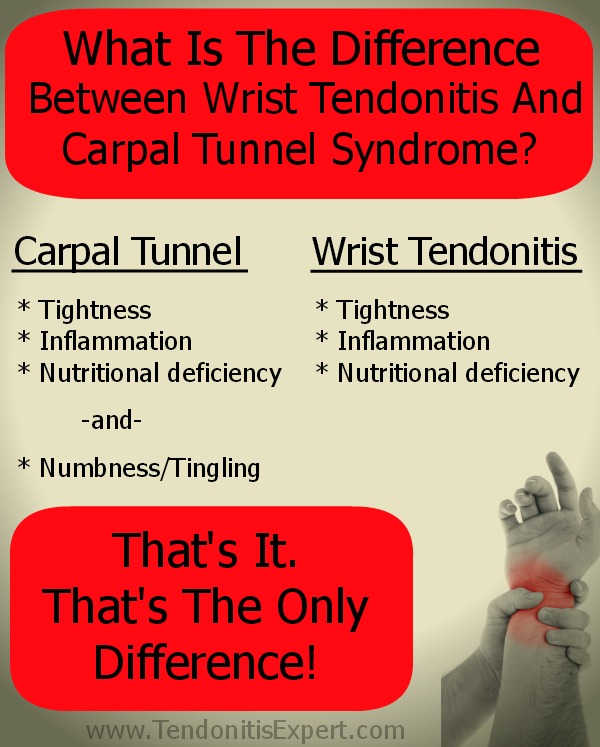Ankle Tendonitis Is
Not An Ankle Problem
Ankle Tendonitis is a common diagnosis any time you have ankle pain lasting more than a couple weeks.
If you -sprain- your ankle, that's a ligament injury.
If you -strain- your ankle, that's a muscle/tendon injury.
Tendonitis of the ankle is an entire different dynamic. Ankle tendinitis isn't just an issue at the ankle, it consists of the entire lower leg.
And if you've been diagnosed with tendonitis ankle, it's important to be aware of what that really means.
It's also important to understand how it can be misdiagnosed. And most importantly, it's important to understand how to make the ankle pain go away.
What Is Ankle Tendonitis?
What is Ankle Tendonitis?
Tendonitis in the ankle technically means that the tendons that attach the lower leg muscles to the ankle bones are irritated and inflamed. This can include microscopic wear and tear damage.
Doctors tend to use the term 'tendonitis' anytime there's lasting pain in a soft tissue structure.
Depending on how and why you have ankle pain, aside from actual tendonitis there are a few common scenarios of ankle pain that can get misdiagnosed as tendonitis:
* Ligament injury -
* Ankle bone out of alignment -
Let's Define Each Of Those
Ligament Injury - Each of the several bones of the foot and lower leg are held together by ligaments.
Ligaments connect bone to bone.
Tendons connect muscle to bone.
Via a variety of instance, you can injury or irritate the ligaments. This causes pain, and lasting pain (because every step irritates the irritated ligament a little bit.
If a doctor pokes around the foot to see what hurts, if he doesn't know the anatomy he's pressing on, and you said you hurt your ankle running/jumping/walking/working, then most doctors, definitely most general practitioners, will just call it 'ankle tendonitis'.
Ankle Bones Misaligned -
If your ankle bones are misaligned (any of the two lower leg bones and multiple tarsal [foot] bones), they can grind on each other in ways that cause pain, and ongoing pain.
Kind of like when your spine is out of alignment and hurts, but this one you walk on and continually irritate.
When you or a doctor pokes around, you'll feel pain just like when a tendon or ligament hurts, so it's very important to know what's what when looking for the source of ankle pain.
Actual Ankle Tendonitis
Ankle tendonitis, meaning, inflammation of a tendon, is a problem not just isolated to the tendon itself.
Tendon pain is really just a symptom of a bigger problem. Your doctor won't tell you that (because they never ask WHY a tendon is hurting).
If one (or more) of your ankle tendons hurts, it's because the muscles of the lower leg aren't operating optimally.
Focusing on just the muscle connected to the painful tendon, that muscle is too tight, connective tissue is shrunkwrapped too tight, and the muscle can't contract/relax like it's supposed to, and can't do it's job.
A muscle's job is to absorb force, and if it's not doing that to whatever degree, that force has to go somewhere. Which can be the tendon.
Just because a tendon hurts doesn't necessarily mean that there's anything wrong with the tendon.
Other factors include the Process of Inflammation that's definitely at play, and nutritional insufficiency/deficiency.
Ankle Tendonitis is the predictable result of the Pain Causing Dynamic. See below.
Ankle Tendonitis Symptoms
I'm not going to say much here about ankle tendinitis symptoms, as there's nothing particularly mysterious.
*** Ankle pain, sharp pain, dull pain, throbbing pain, shooting pain, pain up the leg or into the foot....
*** Pain when being active on foot, pain when off foot but actively moving the foot around.
*** Pain when pushing on the muscle(s) attached to the painful tendon(s), pain when pushing on the specific tendon and/or tendon attachment.
Again, it's important to know whether the pain is the tendon, the ligament, or the bone joints, or if it's just pain enhancing chemical from inflammation floating around that is making things hurt.
Well, it's definitely pain enhancing chemical making things hurt, so I'll change that to: It's important to know if there's any damage to the tendon, ligament, or bone joints, or if there's not.
If there's a little damage, or if there's no damage, the symptoms are the same.
If there's more than a little bit of damage, like in the case of a Pulled Calf Muscle (with the pull being down at the ankle), then that's NOT tendonitis, but can and will later develop into ankle tendinitis.
The treatment is pretty much the same though.
Ankle tendinitis, being a problem of function of the lower leg (lower leg muscles etc not working correctly, including not absorbing force correctly with each step), can cause pain and problem elsewhere up the leg. The tendonitis dynamic is one of the Leg Pain Causes.
Ankle Tendonitis Treatment
Your doctor will tell you to stay off your feet, rest, and use Anti-inflammatory drugs like Ibuprofen, and possibly an ankle brace.
Then when that doesn't work, your next visit you'll again get a prescription for rest and anti-inflammatories, but definitely an ankle brace, possibly a Corticosteroid Injection, and physical therapy.
There will likely be a warning that 'If that doesn't work we'll have to consider surgery'. Which implies that surgery can fix it, even though the doctor isn't sure why his previous prescriptions didn't help.
This is the point people usually find this website, though unfortunately too many people continue on to have surgery before looking outside their doctor's office for answers.
For an Ankle tendonitis treatment to be effective, it must target the factors that CAUSE tendonitis symptoms. Running or jumping isn't actually the cause of ankle tendinitis symptoms, it's just one factor at play, that made other factors worse.
1. First, you must understand how tendonitis works. See: What Is Tendonitis
2. You must understand the Pain Causing Dynamic
3. Learn How To Reduce Inflammation. Inflammation releases pain enhancing chemical. Get that out of there.
4. See: Magnesium for Tendonitis. Too tight muscles require magnesium to relax. Too tight muscles cause constant tension on tendons which causes pain.
Start with that. Understand the mechanism, decrease inflammation and start giving your system some of the basic building blocks that it needs to operate correctly.
Your pain may just go away all by itself. Pain and problems in the body often to that.
But if your ankle tendonitis becomes chronic, and doesn't go away like you expect that it should, then there are various predictable factors keeping it in place, and making it worse.
Ice Dipping as described, if you do it enough, -will- lower pain levels. It's not a fix, but it lower pain levels.
Magnesium will help your muscles relax and work better. Magnesium supplementation is a must.
Return to the top of this Ankle Tendonitis page.
Go to the main Tendonitis page.
Go to the www.TendonitisExpert.com homepage.
| Share Your Story
|




